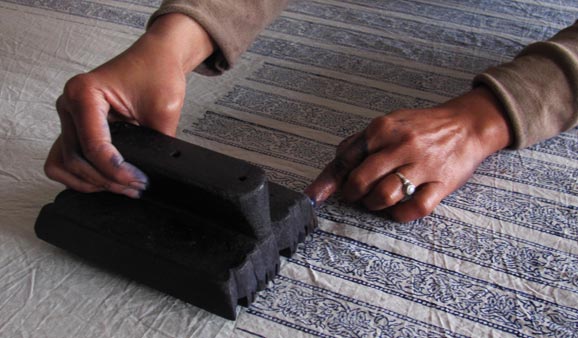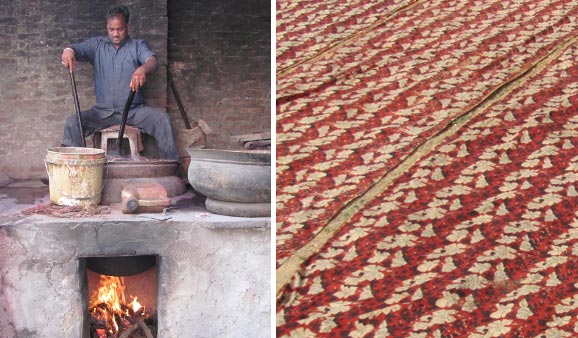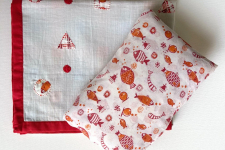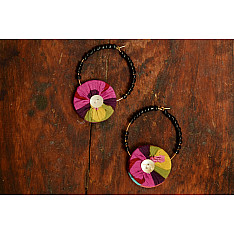- Availability: Out Of Stock
- Made & Mkt by: PAYAL
- Product Code: 2022-PJ10
- Weight: 50.00g
- Dimensions: 6.50cm x 4.50cm x 0.00cm
The typical dispatch time is 2-3 days; however, in special cases, it may take longer. Please refer to the product details section for specific timelines. Once dispatched, we will share the tracking details with you.
For returns, you can file a request within 24 hours of receiving the product. If the package is damaged, please make a video while unboxing and share images of the damaged item along with your return request.
9328006304 ( WhatsApp )

Bagru, a town at the outskirts of Jaipur(Rajasthan) is one of the textile hubs. It is known for centuries for its natural dying, syahi begar printing, indigo dying and wooden hand block printing. Syahi begar printing is one of the traditional hand block print techniques where the prints are in the combination of red, black and yellow ochre or cream.

Syahi (black color) is made by keeping the mixture of horse shoe iron, water and jaggery in an earthen pot for around 15-20 days in summers whereas; in winters, it takes around 6 weeks to get ready. Then tamarind seed powder is mixed to this mixture and boiled. Begar (red color) is made by mixing Alum (fitkari), Madder (lal mitti) and juice of baboool gond.

The process of Syahi Begar involves pre-washing and soaking the fabric in fresh water and turcoil oil for 24 hours. It is done to remove all starch, dust or any other contaminants. Next the fabric is beaten to remove left over dust. The fabric is then dyed in the Harda (merubelum powder) solution. It allows the natural dyes to adhere to the fabric and become colorfast. The typical yellow dye or color is obtained from the Harda fruit which is again yellow in color.

The dyed fabric is then spread on long padded printing tables. There are three different blocks used to make the prints. First block that is a Gadh block,it is used for the background, next the Rehk block for fine outlines and finally the Datta block for inside filling. There can be more than one Datta block to fill in different colors. This process of printing is repeated over and over again.

Image & Text by ~ Gratitude crafts
| Craftsmen | |
| Made by | Made by Payel |
| Material | |
| Made of | Block printed fabric and brass |

















-225x150w.jpg)
-225x150w.jpg)
-225x150w.jpg)
-225x150w.jpg)
-225x150w.jpg)
-225x150w.jpg)
-225x150w.jpg)
-225x150w.jpg)
-225x150w.jpg)
-225x150w.jpg)
-225x150w.jpg)
-225x150w.jpg)
-225x150w.jpg)
-225x150w.jpg)

-225x150w.jpg)
-225x150w.jpg)

-225x150w.jpg)







-225x150w.jpg)









-225x150w.jpg)

-225x150w.jpg)

-225x150w.jpg)

